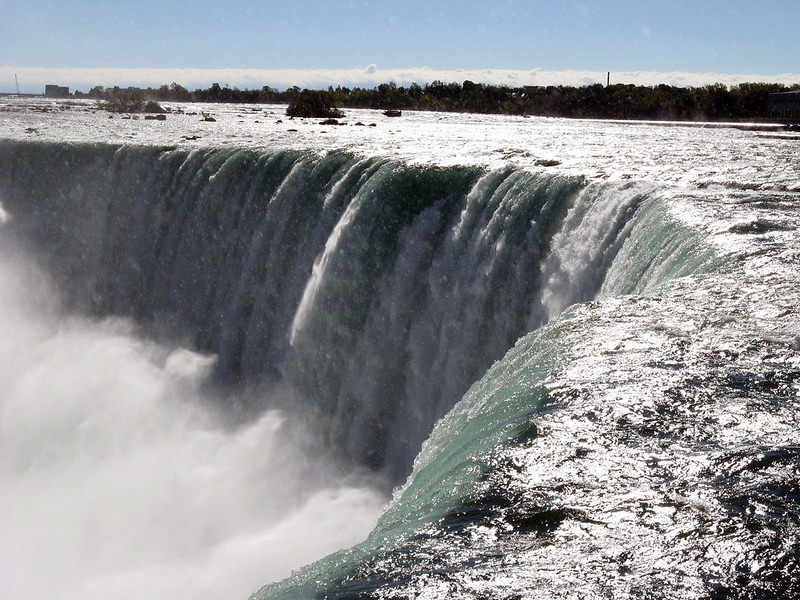
Earlier we looked at why cities built urban parks (as gathering places, recreation facilities, and places for experiencing a bit of nature). It turns out that state and national parks came from a different impulse.
They were created as ways of preserving places of extraordinary natural beauty or great historic importance that could be made accessible to those with the means of getting to them. So think of city parks as places for locals, state and national parks as places for tourists.
Given these needs (preserve something extraordinary that can become a source of tourism), it’s little surprise that the first state park was Niagara Falls State Park in upstate New York in 1885, which allowed people to see the extraordinary falls and served as a backdrop for millions of honeymoon photos. And the first national park? It was Yellowstone, established in 1872, though it took decades longer for the federal government to make Yellowstone and other national parks accessible to tourists.
How was this accomplished? With a major boost in the 1930s from two of President Franklin D. Roosevelt’s New Deal programs, the Civilian Conservation Corps and the Works Progress Administration, which opened access to and built accommodations in hundreds of state and national parks across America. In creating access, the CCC built some of America’s most scenic roads, including the Blue Ridge Parkway in North Carolina and Skyline Drive in Virginia, which leads to the Great Smoky Mountains and Shenandoah National Park, respectively.
How popular are state and national parks today? National parks drew 328 million visitors in 2019; state parks drew 807 million visitors. That’s the equivalent of every single person in America visiting a state or national park three and a half times in a 12-month period. So, yes, these parks are very popular. (Another sign of their popularity: The National Park Service has about 20,000 full- or part-time employees. It also has 279,000 volunteers who do everything from conducting tours to rebuilding trails and doing research.)
So, if you’ve ever enjoyed a day at a state park or beheld the beauty of a national park, you can thank government for it.
More information:
https://en.wikipedia.org/wiki/State_park
https://en.wikipedia.org/wiki/National_Park_Service
Give the credit to: state governments 40%, federal government 60%
Photo by williams_jt. Licensed under Creative Commons.
[…] There are two types of public parks in America: city or urban parks, and state and federal parks. They have different purposes, so we’ll start with the city parks and take up the state and national parks in a later posting. […]